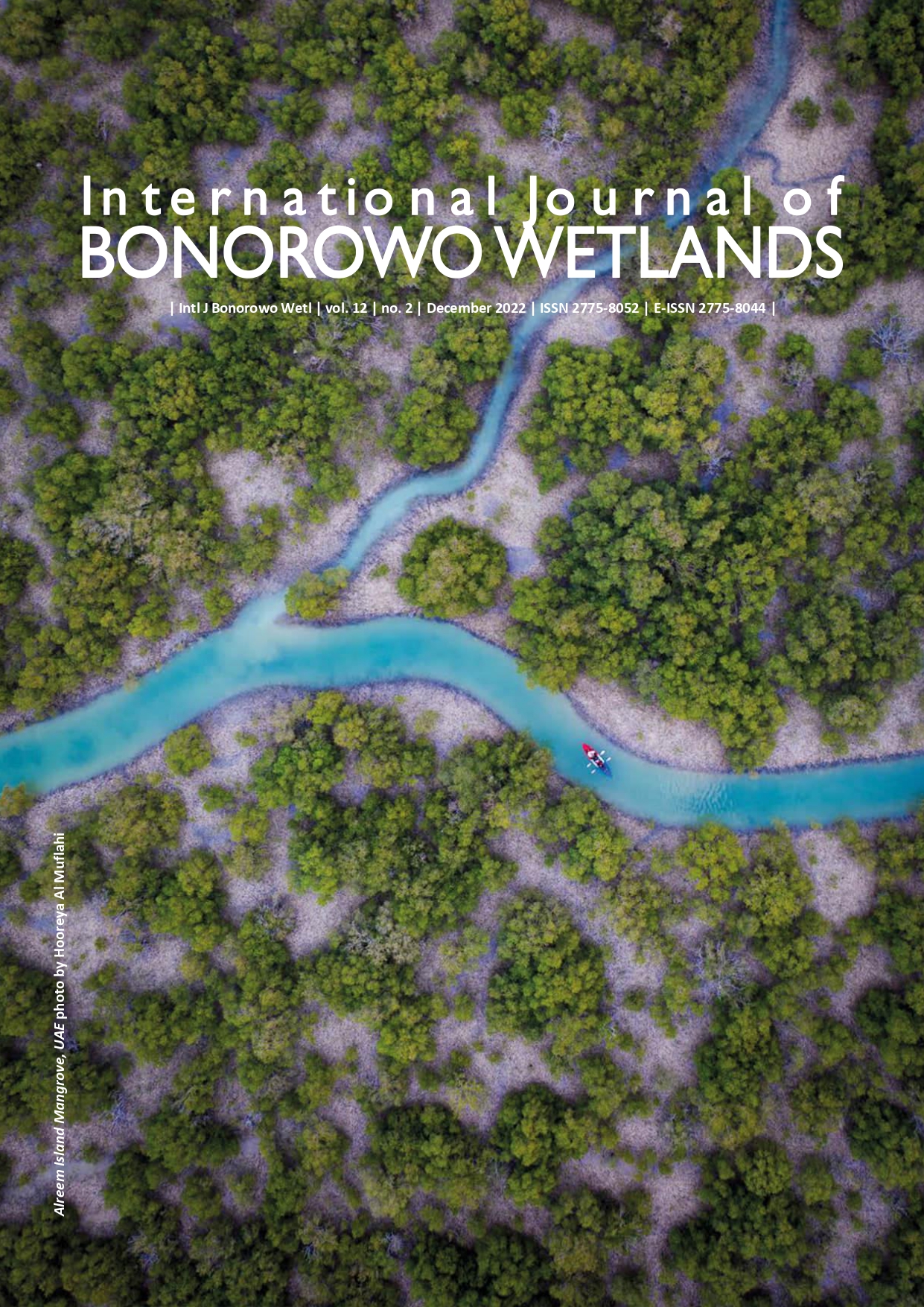The bacterial flora of Oreochromis niloticus and Clarias gariepinus from earthen ponds in Sagana and Masinga, Kenya
##plugins.themes.bootstrap3.article.main##
Abstract
Abstract. Karimi RD, Ngeranwa JJN, Njagi ENM, Kariuki S. 2022. The bacterial flora of Oreochromis niloticus and Clarias gariepinus from earthen ponds in Sagana and Masinga, Kenya. Intl J Bonorowo Wetlands 12: 63-73. Food-borne diseases traced to fish consumption have been reported globally, including in Kenya. The aspect of food quality as far as fish consumption is concerned is underestimated in Kenya though aquaculture has been promoted. The bacterial flora of Tilapia (Oreochromis niloticus Linnaeus, 1758) and Catfish (Clarias gariepinus Burchell, 1822) from Masinga Dam and earthen ponds at Sagana fish farm was determined in this study to determine the anti-microbial response of the pathogenic bacteria. Tilapia fish and Catfish samples were collected from Masinga Dam and Sagana farm in the dry and rainy seasons. The fish were skinned, and gut content was taken for laboratory tests. The water and water sediment samples from these two study sites were also collected. Those samples were processed and cultured in MacConkey agar, and the selective media were subcultured in the colonies and then subjected to morphological examination from cultures. Then, the biochemical tests were carried out using commercially available API kits. The study showed the presence of bacterial species belonging to Enterobacter spp. (n=34), Pseudomonas spp. (n=6), Aeromonas spp. (n=5), Vibrio spp. (n=3) and Acinetobacter spp. (n=2) isolates during the dry season, while bacterial species belonging to Enterobacter spp. (n=31), Pseudomonas spp. (n=6), Aeromonas spp. (n=4) isolates during the dry season. The anti-microbial susceptibility analysis showed that the highest resistance rates were found against Ampicillin (Amp) (61.5% of isolates), Amoxicillin (AmL) (65.9% of isolates), Tetracycline (Te) (31.8% of isolates), and Chloramphenicol (C) (27.5% of isolates) while the lowest was Nalidixic acid (Na), Cefuroxime (Cxm) and Streptomycin (S) at (4.4% of isolates) each. All isolates were sensitive to Gentamycin (Gen), Ciprofloxacin (Cip), and Cefotaxime (CTX). The presence of the above organisms, some potentially pathogenic to humans, indicates that improperly handled, undercooked, or consumed raw fish may cause disease in susceptible individuals. At the same time, some isolates’ anti-microbial resistance indicates that the use of antibiotics in aquaculture to promote growth should be studied further with a view to policy formulation.

